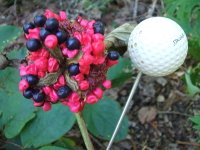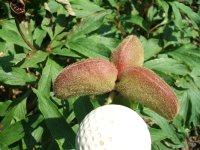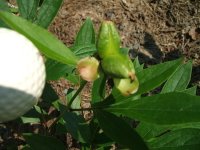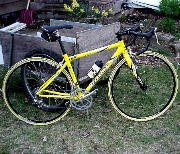 Carpels of Paeonia mlokosewitschii, the Golden Peony, had taken on an interesting and showy red tone. (These have since opened, but not until about a week ago. Photo to follow)
Carpels of Paeonia mlokosewitschii, the Golden Peony, had taken on an interesting and showy red tone. (These have since opened, but not until about a week ago. Photo to follow) Paeonia obovata, the third-last of my species to show its seed display.
Paeonia obovata, the third-last of my species to show its seed display. Paeonia macrophylla, close kin of Paeonia steveniana (some might say identical or close enough to it) but a tiny bit later to ripen seed.
Paeonia macrophylla, close kin of Paeonia steveniana (some might say identical or close enough to it) but a tiny bit later to ripen seed. Paeonia officinalis (in this case, subspecies villosa). Not so exotic and showy, but on close inspection the inside surface of the carpels are satiny reddish in tint. None of the officinalis mob here have had the bright red aborted beads; rather theirs are tiny, shrivelled, and brown. Only the viable seed has any size to it.
Paeonia officinalis (in this case, subspecies villosa). Not so exotic and showy, but on close inspection the inside surface of the carpels are satiny reddish in tint. None of the officinalis mob here have had the bright red aborted beads; rather theirs are tiny, shrivelled, and brown. Only the viable seed has any size to it.______________________
An interesting development during an Argentine football (soccer) match I was watching on tv today: one of the Ball Boys got red-carded and ejected from the field (well, the margins of it anyways!). The kids had been taking their time in giving the ball to the visiting team when they had won a throw-in.



















 Carpels of Paeonia anomala subsp intermedia
Carpels of Paeonia anomala subsp intermedia





